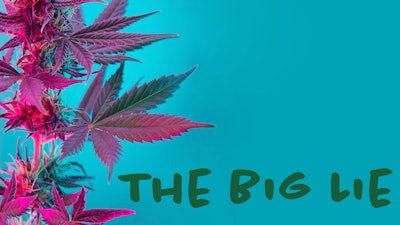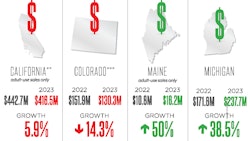
It can be easy to be discouraged by this moment in the cannabis industry. Announcements from multistate operators exiting markets, smaller craft producers closing for good and companies laying off a significant number of workers have been a regular part of the news cycle of late as businesses continue to wrestle with depressed prices, rigid and complicated regulations, over taxation and increasing costs.
As usual, it’s a state-by-state story, and there have been some notable bright spots, too, including Maryland’s successful adult-use rollout July 1. According to reporting from Cannabis Business Times Associate Editor Tony Lange, Maryland’s licensed retailers sold more than $10.4 million in medical and adult-use cannabis in the first three days of opening the expanded market. “This compares to roughly $4 million in medical-only sales from the three-day weekend” ahead of the 2022 July Fourth holiday, Lange reported.
And, as this issue went to press, states were releasing their June sales figures, providing an opportunity to compare how markets are progressing this year compared to 2022.
Massachusetts reported its seventh-highest sales month on record in June and is one of five adult-use markets CBT examined with higher total sales (based on monthly sales averages) for the first half of 2023 compared to the same period in 2022. (More details are in Fast Stats.) That’s promising. However, according to Lange and Associate Editor Andriana Ruscitto’s analysis of monthly sales from 11 adult-use markets, the six most mature adult-use states are reporting declining average monthly sales. Colorado producers have taken the biggest hit, as sales averages have dipped by more than 14% so far this year compared to 2022.
And there’s still no conclusion on the SAFE banking bill nor President Joe Bidens’ call to reexamine cannabis’s Schedule I status. As cannabis legend Mel Frank notes in this month’s cover story, the lack of banking access and ability to deduct expenses “shows just how entrenched the ‘Big Lie’ about cannabis still is.”
But his personal story is also a moment to remember just how far the industry has come since he started growing cannabis in his Manhattan apartment in 1968. He felt compelled to create the pen name Mel Frank when he started publishing articles and books about how to grow cannabis in the 1970s because using his birth name, James Goodwin, was far too risky at the time.
Frank’s ultimate motivation was access, whether he was sharing seeds with other growers—a collection of his own and those that many others brought him from all over the world—or publishing easy-to-comprehend cannabis growing guides. When outdoor grows were jeopardized and being destroyed by the Drug Enforcement Administration's eradication program, launched in 1979 and expanded in the 1980s, he published the “Marijuana Grower’s Insider’s Guide” in response to teach cultivators how to move their gardens indoors.
In addition to concealing his real name, Frank disguised people he photographed who were part of the underground cannabis industry in 1970s and 1980s; they hid behind towering plants or pulled their hats down over their faces. Some of those images are included in the cover story and also in a special photo montage.
As David Holmes, owner of Clade9, says, “Without [Frank] and a couple of others who wrote early treatises on indoor cultivation, it would’ve taken a lot longer for the industry to get where it is.”

























